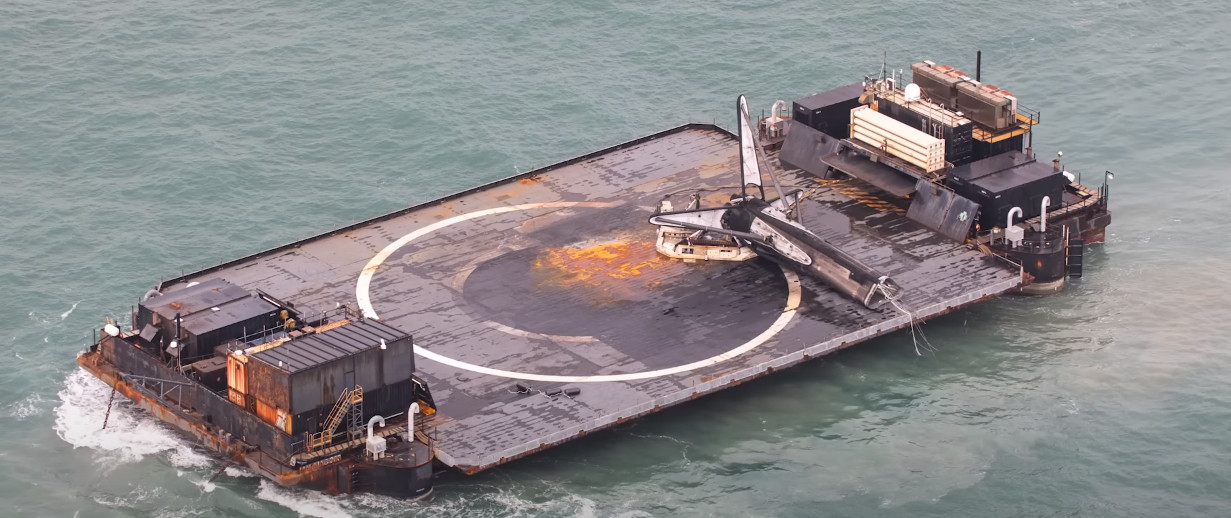Veteran SpaceX Booster Lost Due To Rough Seas [Hackaday]

With the notable exception of the now retired Space Shuttle orbiters, essentially every object humanity ever shot into space has been single-use only. But since December of 2015, SpaceX has been landing and refurbishing their Falcon 9 boosters, with the end goal of operating their rockets more like cargo aircraft. Today, while it might go unnoticed to those who aren’t closely following the space industry, the bulk of the company’s launches are performed with boosters that have already completed multiple flights.
This reuse campaign has been so successful these last few years that the recent announcement the company had lost B1058 (Nitter) came as quite a surprise. The 41 meter (134 foot) tall booster had just completed its 19th flight on December 23rd, and had made what appeared to be a perfect landing on the drone ship Just Read the Instructions. But sometime after the live stream ended, SpaceX says high winds and powerful waves caused the booster to topple over.

Back in May of 2020, B1058 made history as the first privately-built rocket to carry humans into orbit when it sent NASA astronauts Douglas Hurley and Robert Behnken on their way to the International Space Station. This flight also marked the first time a crewed spacecraft had been launched from US soil since the final Shuttle mission, a milestone that earned B1058 the honor of having the iconic NASA “worm” logo emblazoned on its side.
Its next mission came two months later, when it carried South Korea’s ANASIS-II military communications satellite to orbit, which was followed by the launch of 60 Starlink satellites in October. In December of 2020 the booster made history again when it carried a remotely-operated Dragon capsule to the ISS during the CRS-21 resupply mission, as it was the first time NASA agreed to have one of their missions carried on a rocket with more than one previous flight.
Since then B1058 completed 15 launches, made up of a Starlink deployments and “rideshare” missions that brought several CubeSats to orbit at once. All told, SpaceX says this particular rocket was responsible for carrying more than 860 spacecraft to orbit over the last three and a half years — a staggering figure that would have been unimaginable a decade ago.
While B1058 was largely destroyed when it fell over, it’s not a total loss. Jon Edwards, Vice President of Falcon Launch Vehicles, took to social media to say that the company plans on salvaging the booster’s nine surviving Merlin engines (Nitter) and studying any other intact hardware as part of their ongoing work to improve reusability. So while it’s unfortunate that this storied rocket didn’t get the chance to retire to a museum, at least it will continue to contribute to the company’s goals of developing rapidly reusable spaceflight systems.

![veteran-spacex-booster-lost-due-to-rough-seas-[hackaday]](https://i0.wp.com/upmytech.com/wp-content/uploads/2023/12/159859-veteran-spacex-booster-lost-due-to-rough-seas-hackaday.jpg?resize=800%2C445&ssl=1)